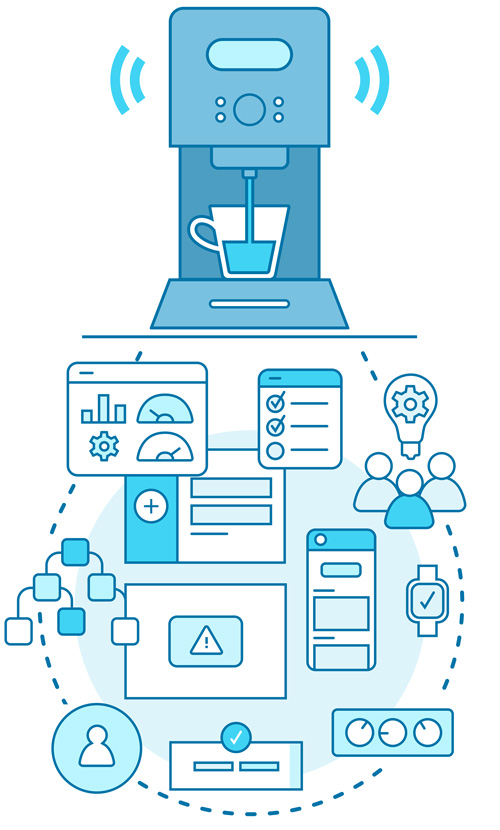Addressing increased complexity in product design
There was once a time when products (digital or physical) were built to do one thing really well – toasters toasted, software processed data, and phones made calls.
Market success for these products, and satisfaction with users, hinged on their ability to perform this one expressed action.
Then technology began to speed up, and manufacturing time and costs decreased, spurring increased competition and innovation. This meant products had to do more—adding features and functionality—to differentiate themselves in the market and minds of consumers.
But even as product complexity continues to grow, market demand for simple, intuitive user experiences has remained constant.
Placing much of the burden to maintain user satisfaction squarely on the shoulders of today’s product designers.

Take a simple coffee maker, for example.
For these products, success isn’t just about crafting a delicious cup of coffee anymore. Modern coffee makers must also grind, froth, and think for themselves—connecting to the cloud and mobile apps to enhance the user experience.
Internet connectivity and smart features have further expanded the realm of product possibilities. Now coffee makers offer dynamic drink recommendations, provide timely reminders to order more coffee beans, and even pour pre-scheduled cups in advance. Meanwhile, managing and transferring data back to the manufacturer to track usage, push updates, and optimize performance.
Beyond IoT applications, there are additional technologies for product designers to consider, like AI, machine learning, voice control, facial recognition, AR/VR, etc. While also grappling with the social, economic, and global factors that weigh heavily on consumers’ minds, including accessibility, inclusivity, privacy, cost, lifespan, and sustainability.
All of which means designers are confronted with an endless sea of product requirements and user considerations to manage. And suddenly, brewing coffee doesn’t seem so straightforward.
As a designer, delivering on the promise of simplicity in this new age of product innovation requires more than addressing the problems right in front of us. It requires an awareness and understanding of the deeper factors at play, enabling us to address complexity head-on.
But as you can imagine, working around all that complexity to create the perception of simplicity is … not that simple. A more holistic and flexible level of design thinking is needed. It requires systems thinking.
Systems thinking can be leveraged to capture the many nuanced complexities of an experience and simplify them down to their most essential parts. This approach makes it easier to identify problems and predict outcomes.
In short, systems thinking empowers today’s designers to create sophisticated product solutions that deliver on the promise of a more seamless and simple user experience tomorrow.

